Ukiyoe 浮世絵
Kitagawa Utamaro (喜多川 歌麿)
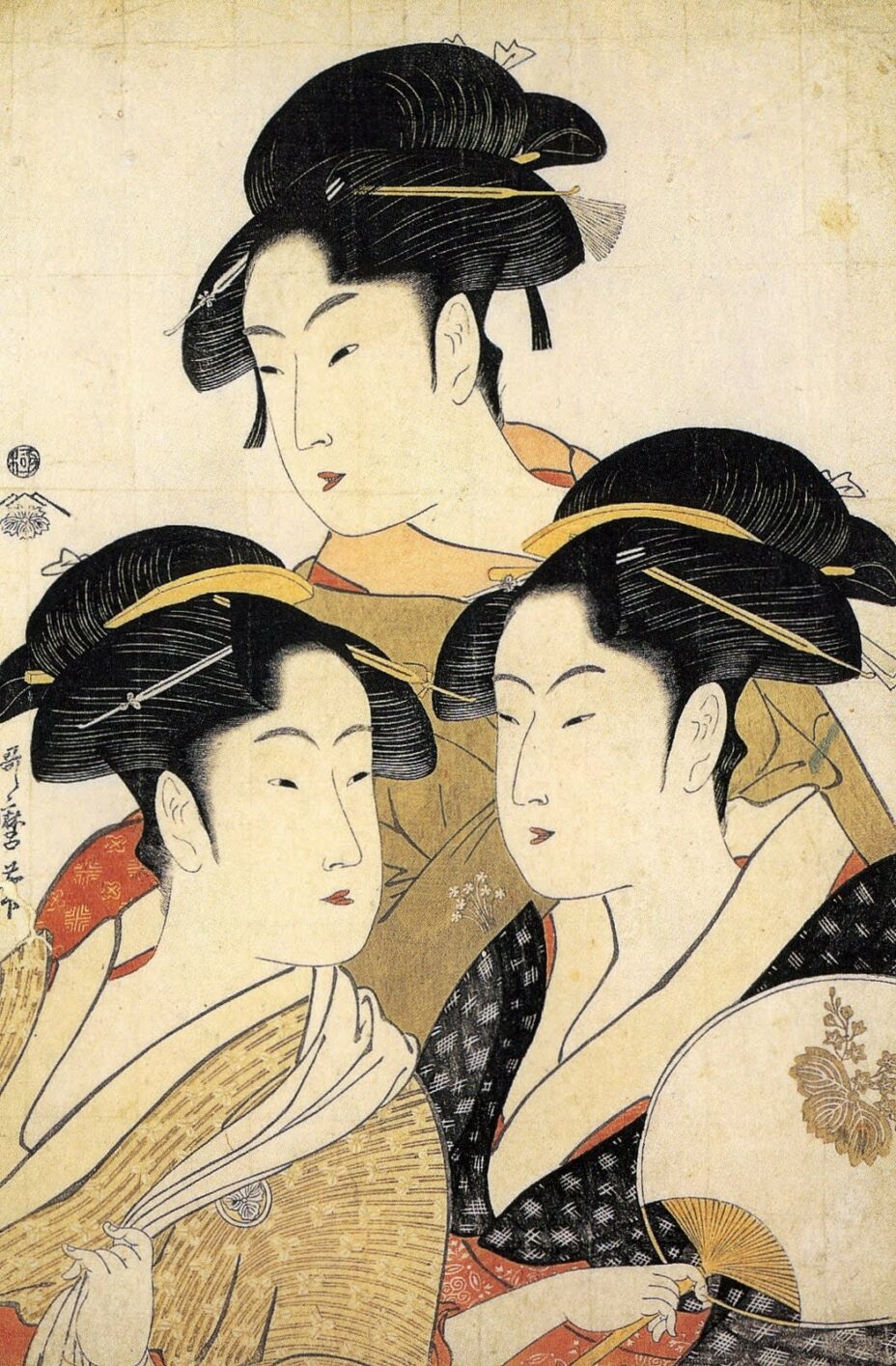
During the early period of ukiyo-e, when hand-painted and monochrome woodblock prints were prevalent, beauty portraits by the artist Hishikawa Moronobu (菱川 師宣), later revered as the "Father of Ukiyo-e" (浮世絵之祖), were the first to gain significant attention. His representative work is "Looking Back Beauty" (回眸美人圖). By the latter half of the 18th century, ukiyo-e had entered its color woodblock print period (nishiki-e, 錦絵), which marked the pinnacle of ukiyo-e's development, showcasing a diverse array of styles. In the realm of beauty portraits, notable artists such as Utagawa Toyoharu (歌川 豊春, founder of the Utagawa school) and Torii Kiyonaga (鳥居 清長) emerged. Among them, Kiyonaga, along with Suzuki Harunobu (鈴木 春信), Kitagawa Utamaro (喜多川 歌麿), Keisai Eisen (溪斎 英泉), Utagawa Kunisada (歌川 国貞), and Tsukioka Yoshitoshi (月岡 芳年), was known as one of the "Six Great Bijinga Masters" (六大美人絵師). Additionally, Kiyonaga, Harunobu, Utamaro, Katsushika Hokusai (葛飾 北斎), Utagawa Hiroshige (歌川 広重), and Tōshūsai Sharaku (東洲斎 写楽) were collectively referred to as the "Six Great Ukiyo-e Masters" (浮世絵六大家).
Kitagawa Utamaro's life story has been scarcely documented. Therefore, analyses of his development as an artist primarily rely on his works. Although he excelled in creating images of birds, flowers, insects, genre scenes, and book illustrations, he is most renowned for his beauty portraits. Over his career, he produced more than 2,000 prints, including over 120 beauty portraits. He also created numerous illustrated books, over 30 in total, such as "Ten Studies in Female Physiognomy" (婦女人相十品), "Anthology of Beauties" (美人選), and "Poetic Themes of Great Love" (古典詩歌の偉大な愛情テーマ, sometimes called "Women in Love" 恋愛中の女性). His works were published by at least 60 publishers.
Kitagawa Utamaro's works reached Europe in the mid-19th century, where they gained immense popularity, especially in France. He influenced European Impressionist painters, particularly in their depiction of partial portraits and their emphasis on light and shadow. The term "Japanese influence" mentioned by European artists often referred to Utamaro's works.
Among all ukiyo-e, Kitagawa Utamaro's beauty portraits are often considered the most beautiful and captivating. He masterfully captured subtle characteristics and fleeting emotions of women from various age groups and environments. His reputation has remained intact, and he is acknowledged as one of the six greatest ukiyo-e artists of all time. French art critic Edmond de Goncourt published "Utamaro" in 1891, the first monograph about Kitagawa Utamaro, under the guidance of a Japanese art dealer.
Katsushika Hokusai (葛飾 北齋)
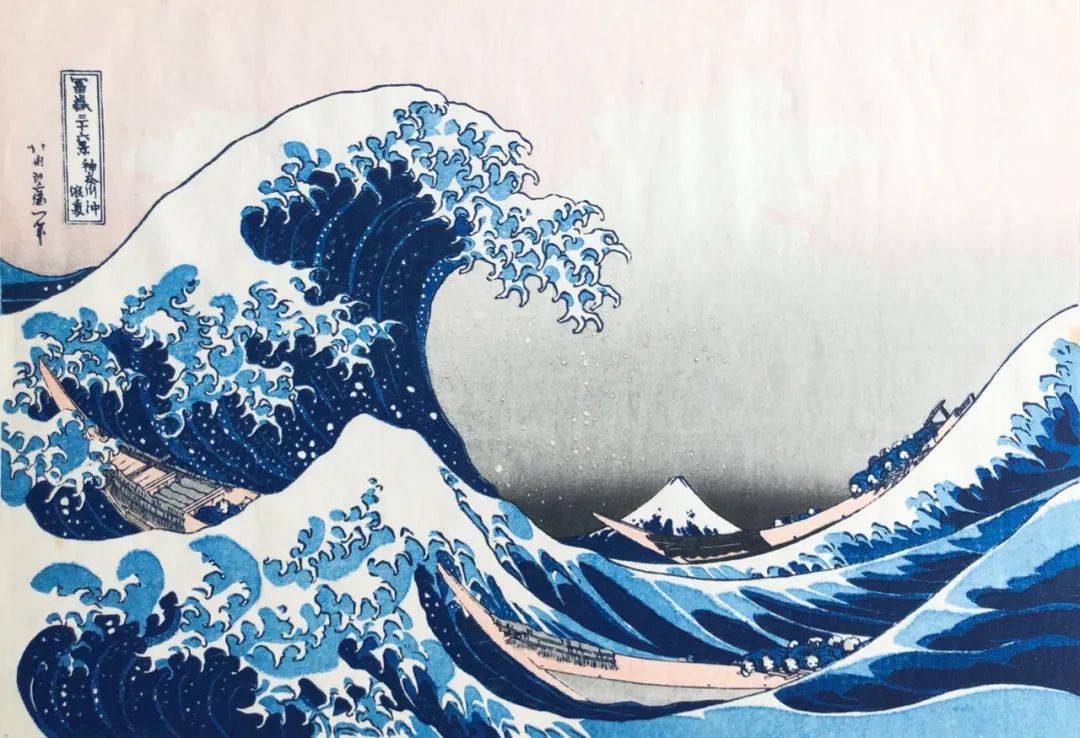
神奈川衝浪里
Katsushika Hokusai was a highly influential Japanese artist, ukiyo-e painter, and printmaker of the Edo period. Born on October 31, 1760, in Edo (now Tokyo), Hokusai is best known for his innovative compositions and the sheer variety of his work. His career spanned more than 70 years, and he produced an estimated 30,000 artworks. Hokusai's influence extended well beyond Japan, impacting Western artists such as the Impressionists, who admired his use of color and perspective.
One of Hokusai's most celebrated works is the series "Thirty-six Views of Mount Fuji" (富嶽三十六景, Fugaku Sanjūrokkei). Created between 1830 and 1832, this series includes the iconic print "The Great Wave off Kanagawa" (神奈川沖浪裏, Kanagawa-oki Nami Ura). This series was Hokusai's response to the burgeoning domestic tourism industry and his personal fondness for Mount Fuji. Mount Fuji, a national and aesthetic symbol of Japan, is one of Japan's three famous mountains. In ancient literature, it was referred to as "Fuji" (不二), "Fuchi" (不尽), or "Fujisan" (富士山), and it is also known as "Peak of Lotus" (芙蓉峰) or "Fuji" (富嶽). The mountain has frequently appeared in traditional Japanese poetry known as "waka" (和歌).
Hokusai also created "Hyakunin Isshu" (百人一首), which is a series of portraits depicting poets from the classical Japanese anthology of one hundred poets, each with one poem. This work showcases his versatility and deep appreciation for Japan's literary heritage.
Throughout his life, Hokusai adopted over 30 different pseudonyms, reflecting the various stages and styles of his career. His dedication to his art was profound; it is said that even on his deathbed in 1849, he lamented that if he had just five more years, he could have become a real painter. Hokusai's legacy endures through his masterful prints and paintings, which continue to inspire artists around the world.
葛飾北斎の師匠と学んだ時期
葛飾北斎 (Katsushika Hokusai) は、いくつかの師匠から学びました。彼が学んだ師匠とそのおおよその時期は以下の通りです。
-
勝川春章 (かつかわ しゅんしょう, Katsukawa Shunshō)
- 時期: 1778年頃(明和5年頃)
- 北斎は18歳の時に浮世絵師勝川春章の門下に入りました。春章の下で北斎は役者絵を中心に学びました。
-
狩野派の画家
- 時期: 1780年代(天明年間)
- 北斎はまた、狩野派の画家からも絵画技法を学びました。この時期に伝統的な日本画の技法を身につけました。
-
鍬形蕙斎 (くわがた けいさい, Kuwagata Keisai)
- 時期: 1789年頃(寛政元年頃)
- 北斎は鍬形蕙斎からも学びました。蕙斎の影響で風景画や草木図などの多彩なテーマに挑戦しました。
これらの師匠から学んだ経験が、北斎の多様で革新的な作風の基礎となりました。北斎はその後も自己研鑽を続け、数々の名作を生み出しました。
36 Views of Mount Fuji
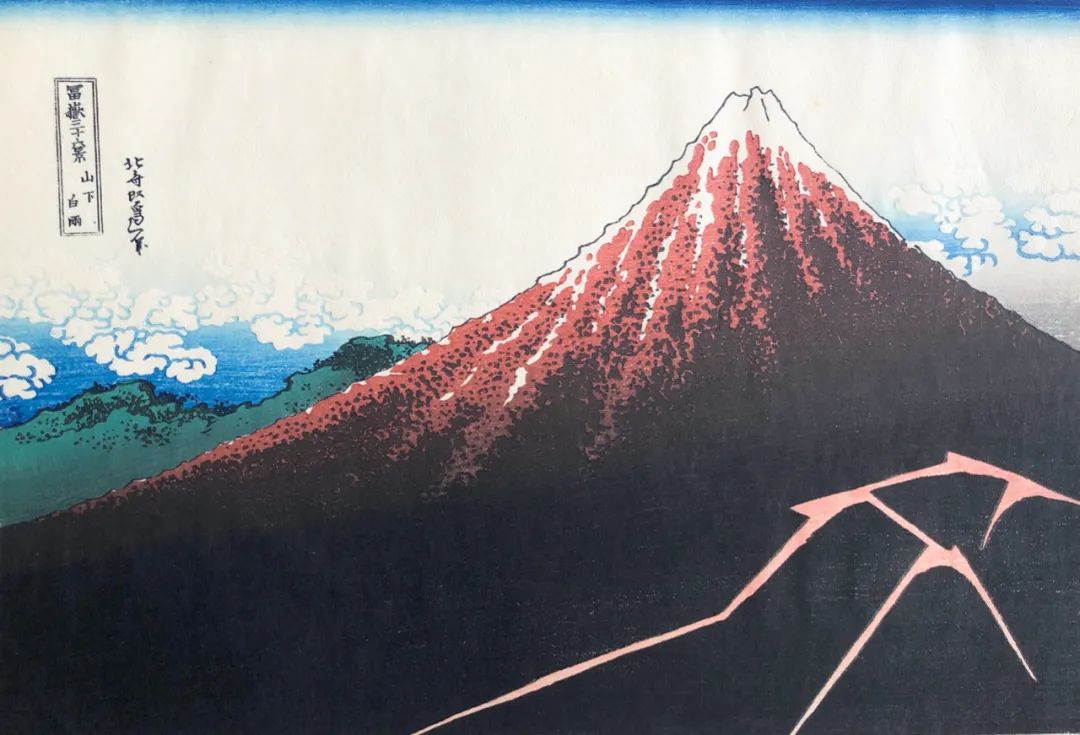
山下白雨
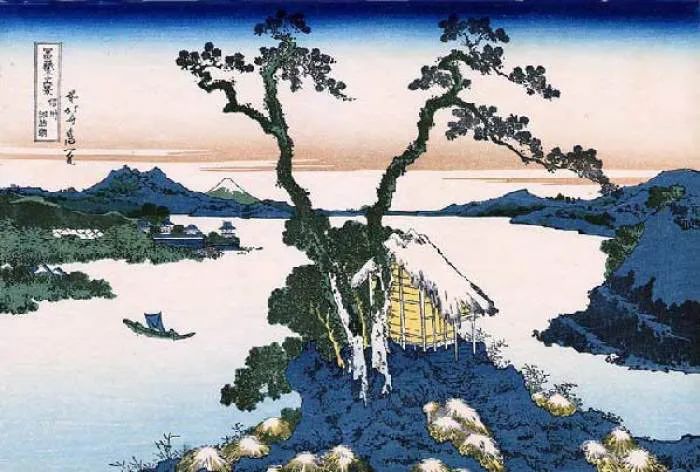
信州諏訪湖
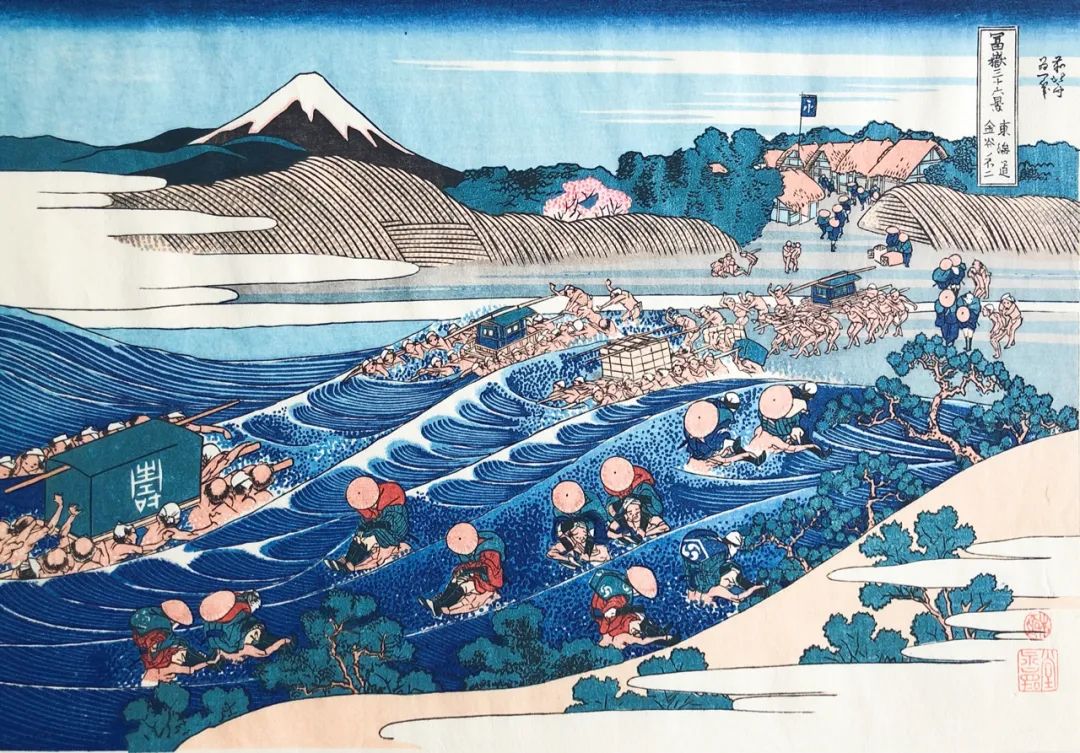
東海道金谷不二
Other artworks
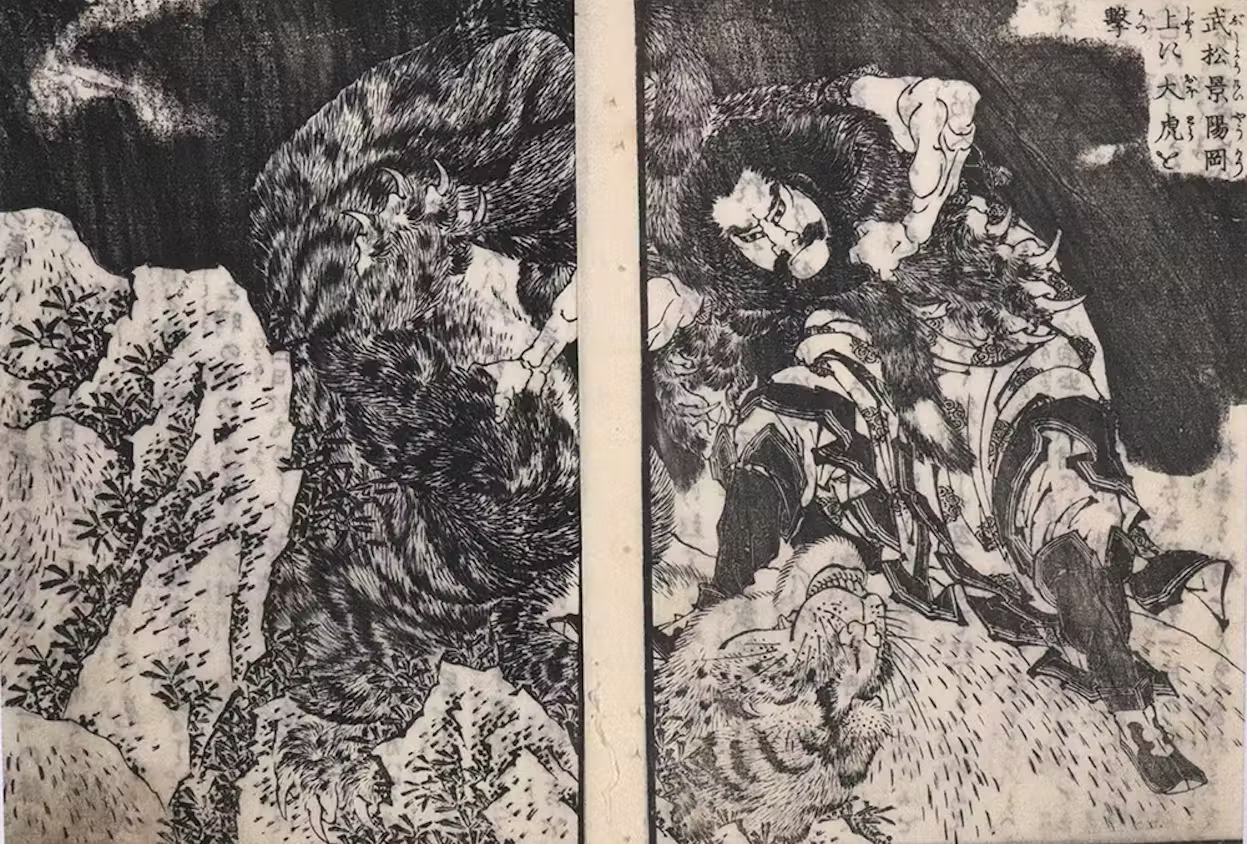
Shimpen Suiko Gaden(『新編水滸画伝』より、武松vs大虎 北斎館所蔵)
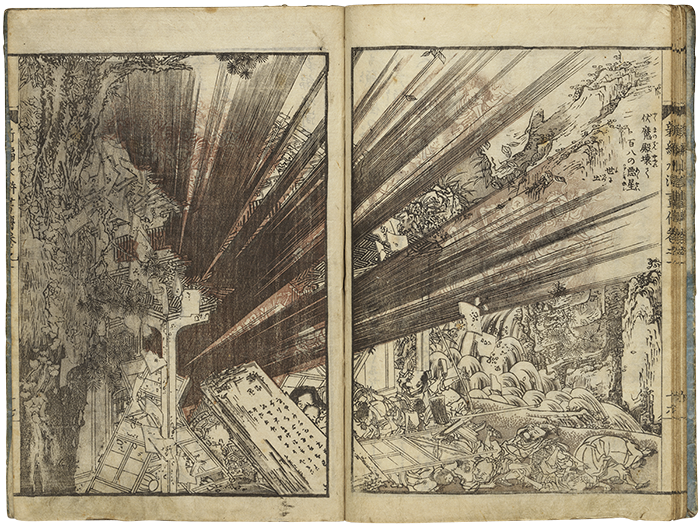
Shinpen suiko gaden shohen shochitsu(『新編水滸画伝』、初編初帙)
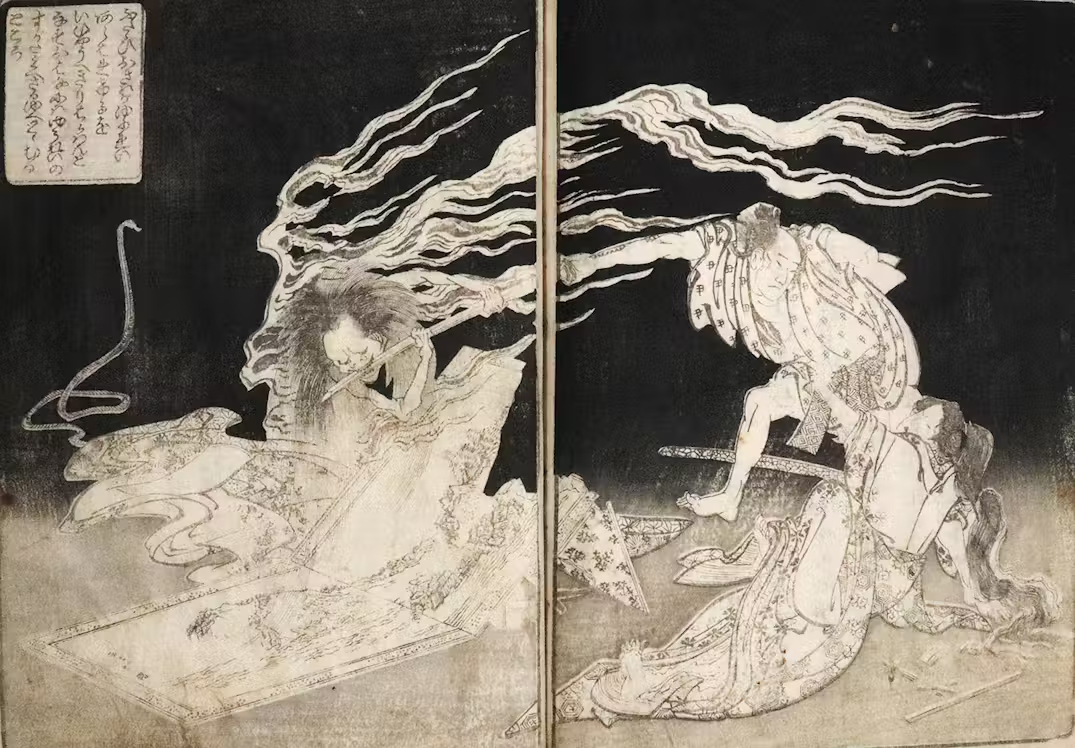
『近世怪談霜夜星』より怨霊vs伊兵衛 北斎館所蔵
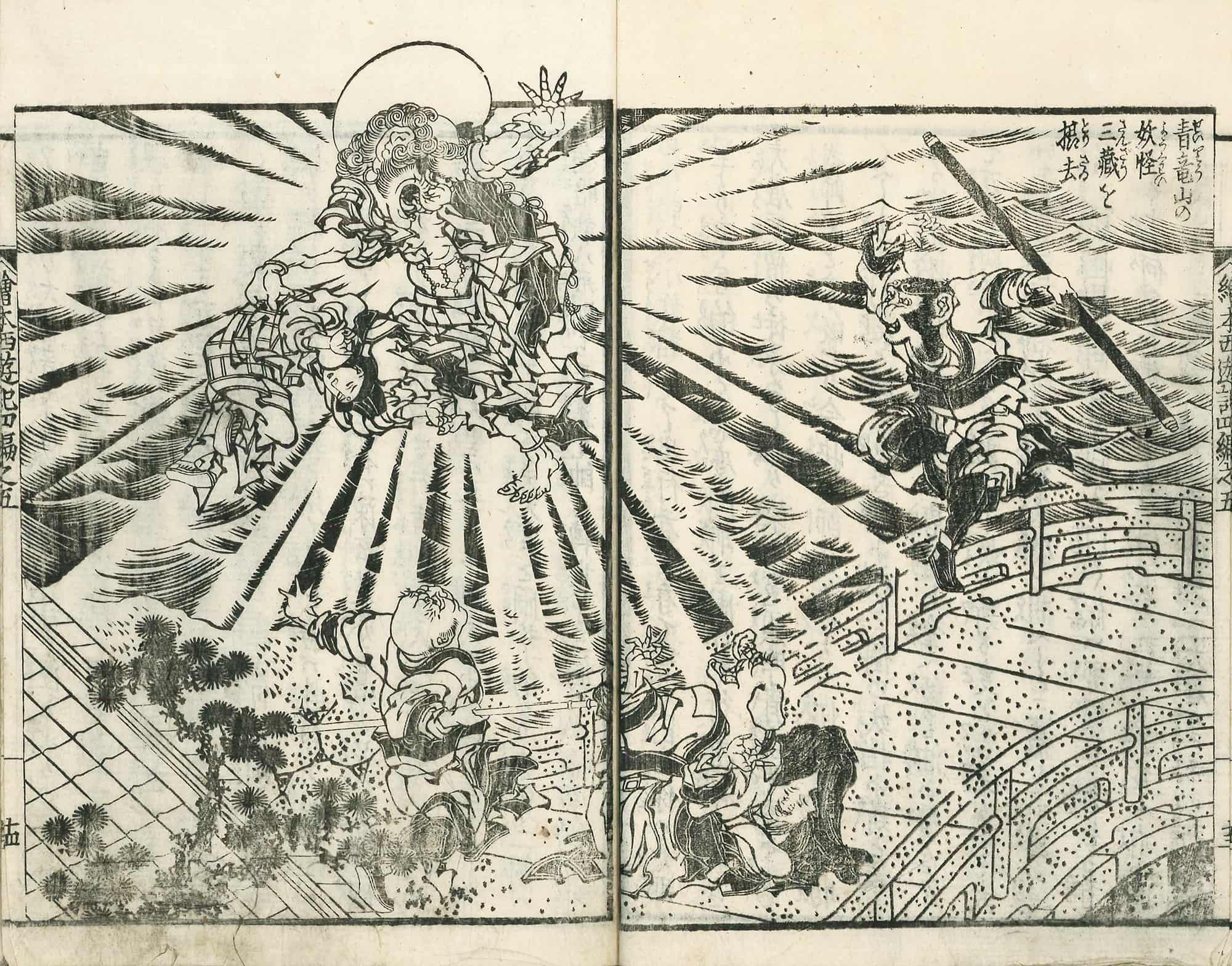
画本西遊全伝 - 四編
Movie and anime
2021 北齋:浮世繪傳奇
2017 眩(くらら)~北斎の娘
2015 - 百日紅 ~Miss HOKUSAI~
1981 - 北斎漫画 映画
Utagawa Hiroshige (歌川 広重)
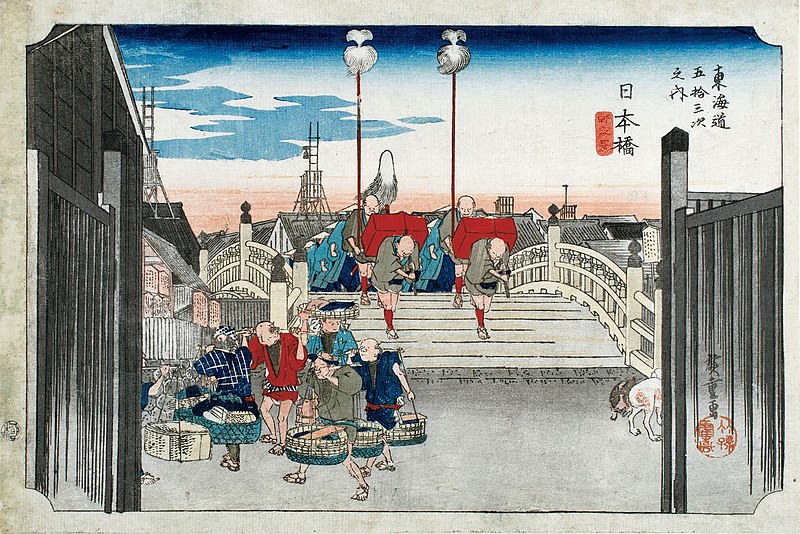
日本橋朝之景
Utagawa Hiroshige was a renowned Japanese ukiyo-e artist, celebrated for his exquisite landscape prints. Born in 1797 in Edo (now Tokyo), Hiroshige was a master of the ukiyo-e style, which translates to "pictures of the floating world." He trained under Utagawa Toyohiro (歌川 豊広) around 1811, where he honed his skills in the traditional art of ukiyo-e.
"The Fifty-three Stations of the Tōkaidō" (東海道五十三次)
One significant opportunity arose when Hiroshige was assigned to accompany a shogunate envoy on August 1 to Kyoto to present horses to the Emperor. During this solemn ceremony, he created many works, which he presented to the shogunate. On the journey to and from Kyoto, Hiroshige sketched numerous landscapes along the route. Upon returning to Edo, and at the request of a bookseller, he published a series of beautiful landscape prints. This led to the creation of his masterpiece, "The Fifty-three Stations of the Tōkaidō" (東海道五十三次), which was released between 1832 and 1834. This work immediately overshadowed the fame of Katsushika Hokusai (葛飾 北斎). Contrary to the common misconception, Hiroshige was not a student or imitator of Hokusai; they were artists of entirely different styles and temperaments. Hokusai was passionate and dynamic, while Hiroshige was refined and serene.
Hiroshige's works drew inspiration from travel books and traditional Chinese painting. However, his greatest achievement lay in his ability to integrate Eastern and Western cultural elements, infusing his works with rich ideological content.
"One Hundred Famous Views of Edo" (名所江戸百景)
Hiroshige's landscape prints, represented by "One Hundred Famous Views of Edo" (名所江戸百景), were innovative. Created between 1856 and 1858, this series comprises 118 prints, depicting the four seasons: spring, summer, autumn, and winter. The "One Hundred Famous Views of Edo" series is now housed at the Ota Memorial Museum of Art in Shibuya, Tokyo. This museum, founded by the late owner Seizō Ota (太田 青蔵), is one of Japan's foremost ukiyo-e museums, with around 20,000 pieces from the Edo, Meiji, and Taisho periods. The museum's version of "One Hundred Famous Views of Edo" features the use of color gradients and rectangular titles, which have been highly praised by experts.
Today, Hiroshige's works are celebrated for their innovative use of perspective, color, and composition, making them timeless pieces of art that continue to captivate audiences around the world.
Impressionist Masters and Ukiyo-e
Van Gogh, while preserving the original imagery, introduced new elements by creating oil paintings based on prints. He replaced carving techniques with brushwork, incorporating Impressionist colors and Pointillist methods into Japanese landscapes, resulting in more intense and vivid colors. One of his notable works in this style is "Papa Tanguy" (〈唐基老爹〉).
Japanese ukiyo-e profoundly transformed contemporary European painting and spurred the development of Impressionism. After Japan opened to the world, international exhibitions in London and Paris first introduced ukiyo-e to Europe. Utagawa Hiroshige's landscapes brought an exotic charm to European artists. Unlike the three-dimensional space favored in European art, ukiyo-e's flat, decorative style offered a new artistic avenue, especially after the invention of photography.
It is said that an artist discovered Katsushika Hokusai's sketchbook in a Paris art shop, leading to the widespread dissemination of ukiyo-e in the art world. French art critic Philippe Burty was an avid collector of ukiyo-e. In 1872, he published numerous articles about ukiyo-e in "Renaissance Literature and Art" magazine, critically examining Japanese art and coining the term "Japonisme" to describe the Japanese art trend in Europe. An English translation of his articles appeared in the "London Academy of Arts" magazine in 1875. "Japonisme" influenced Western culture, including visual arts, sculpture, architecture, decorative arts, and performing arts.
In the 1850s, Japanese products, including maps, texts, textiles, and household items, were exhibited in England. These exhibitions fostered British appreciation for broader Eastern culture and helped establish an independent Japanese national image.
Apologies for that oversight. Here is the section with the artists' names and art pieces translated into Japanese:
Some Famous Ukiyo-e Artists
Utagawa Kuniyoshi (歌川 国芳)
Utagawa Kuniyoshi, originally named Igusa Yoshiaki (井草 芳三郎), later known as Yoshisaburō (孫三郎). He first studied under Utagawa Kuninaga (歌川 国直) and was later taken in by Utagawa Toyokuni (歌川 豊国) in 1811. He took the art name Utagawa Kuniyoshi upon completing his training in 1814. Like other Utagawa school artists, he initially created kabuki prints, but business was poor, and he had to repair tatami mats for a living. Later, he met Utagawa Kunisada (歌川 国貞) and, feeling more talented than him, worked hard to produce well-received warrior triptychs(武者三聯畫). In 1827, he began creating the famous series "One Hundred and Eight Heroes of the Popular Suikoden" (通俗水滸伝豪傑百八人). In the early 1830s, he created many landscape prints, and in the 1840s, he produced numerous beauty and warrior prints. Kuniyoshi was also known for his cat drawings, often placing them in the corners of his works. His innovative designs, imaginative concepts, and solid drawing skills broke the boundaries of ukiyo-e, making him a representative of the late Utagawa school.
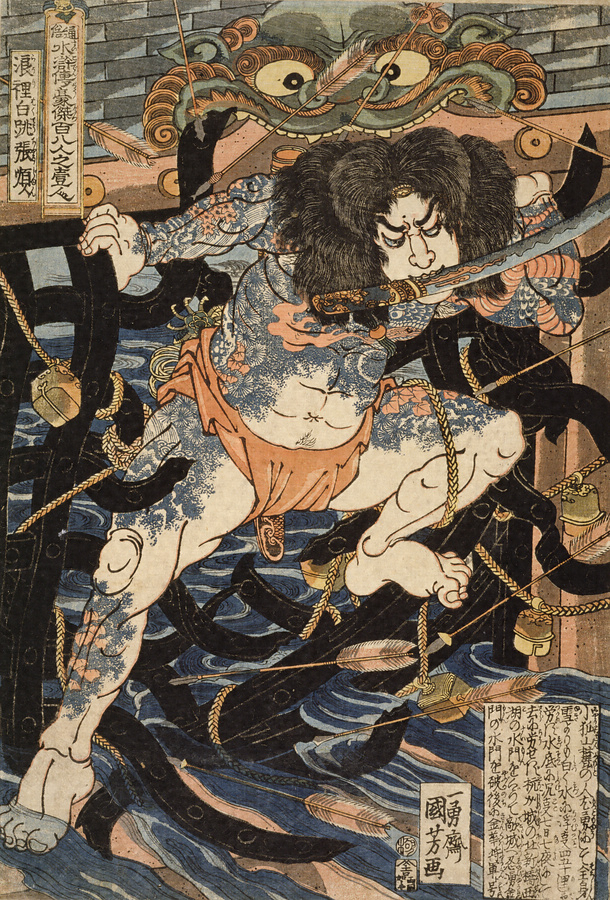
通俗水滸伝豪傑百八人之一個 - 浪裡白跳張順

通俗水滸伝豪傑百八人之一個 - 花和尚魯智深
Tsukioka Yoshitoshi (月岡 芳年)
Tsukioka Yoshitoshi was a student of Utagawa Kuniyoshi (歌川 国芳). He created a wide variety of ukiyo-e, including historical prints, beauty portraits, actor prints, genre prints, classical prints, and battle prints, each showcasing his unique style. Many of his works are known for their strong, impactful "murderous prints" (無慘絵). Despite the decline in demand for ukiyo-e due to the adoption of Western photography and lithography, Yoshitoshi continued to create, striving to elevate ukiyo-e to new heights. He nurtured many artists engaged in Japanese and Western painting, earning him the title "the last great ukiyo-e master" (最後の浮世絵師). Contemporary Japanese writers Edogawa Rampo (江戸川 乱歩) and Yukio Mishima (三島 由紀夫) greatly admired his fantastical scenes.
Natori Shunsen (名取 春仙)
Natori Shunsen was born in Yamanashi Prefecture(山梨縣) and recognized for his artistic talent from a young age. By age 11, he had a solid foundation in Japanese painting and Western watercolor painting. Shunsen illustrated novels by Natsume Sōseki (夏目 漱石), such as "The Poppy" (虞美人草), "Sanshirō" (三四郎), "Light and Darkness" (明暗), and "And Then" (それから). He was highly regarded for his ability to complete works excellently and swiftly. In 1930, along with Itō Shinsui (伊東 深水) and Kawase Hasui (川瀬 巴水), Shunsen was featured in an overseas publication, "American Magazine," which detailed the unique qualities of his prints, introducing this Eastern aesthetic to Western audiences. In the late 1950s, influenced by the Shin-hanga (新版画) movement, Shunsen shifted from actor prints to landscape prints, creating works featuring Mount Fuji (富士山) that garnered significant attention upon release.